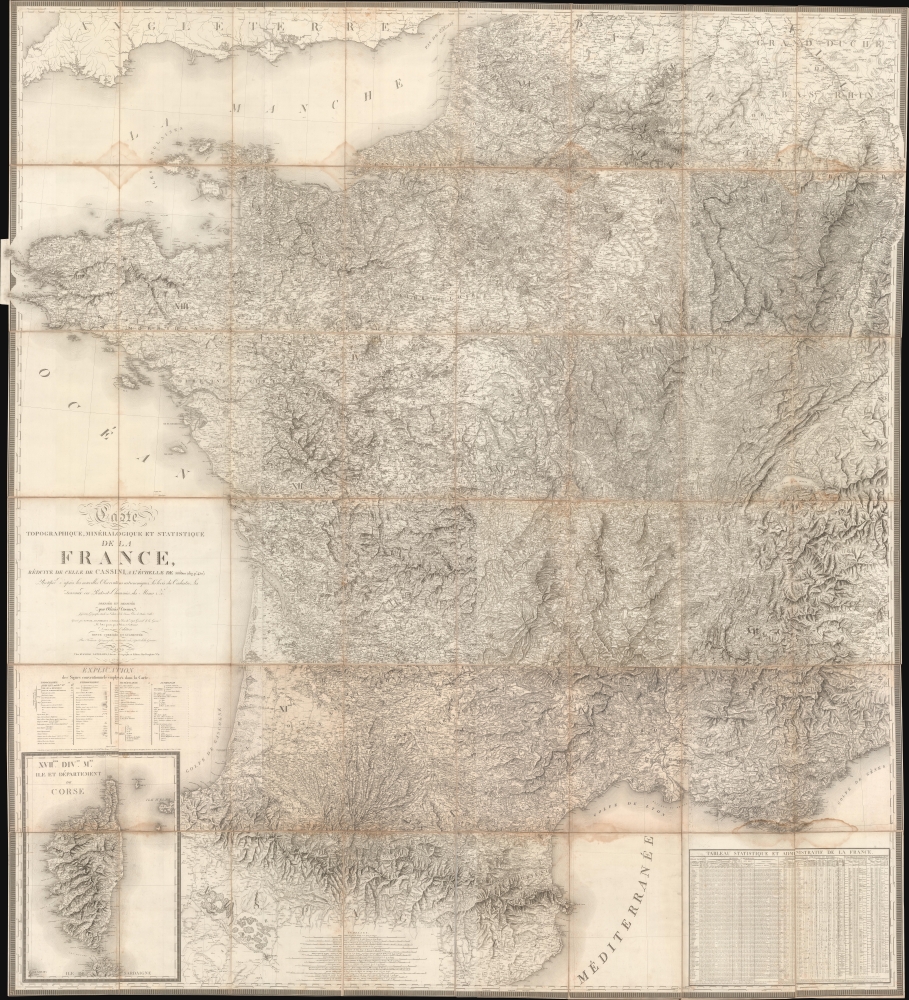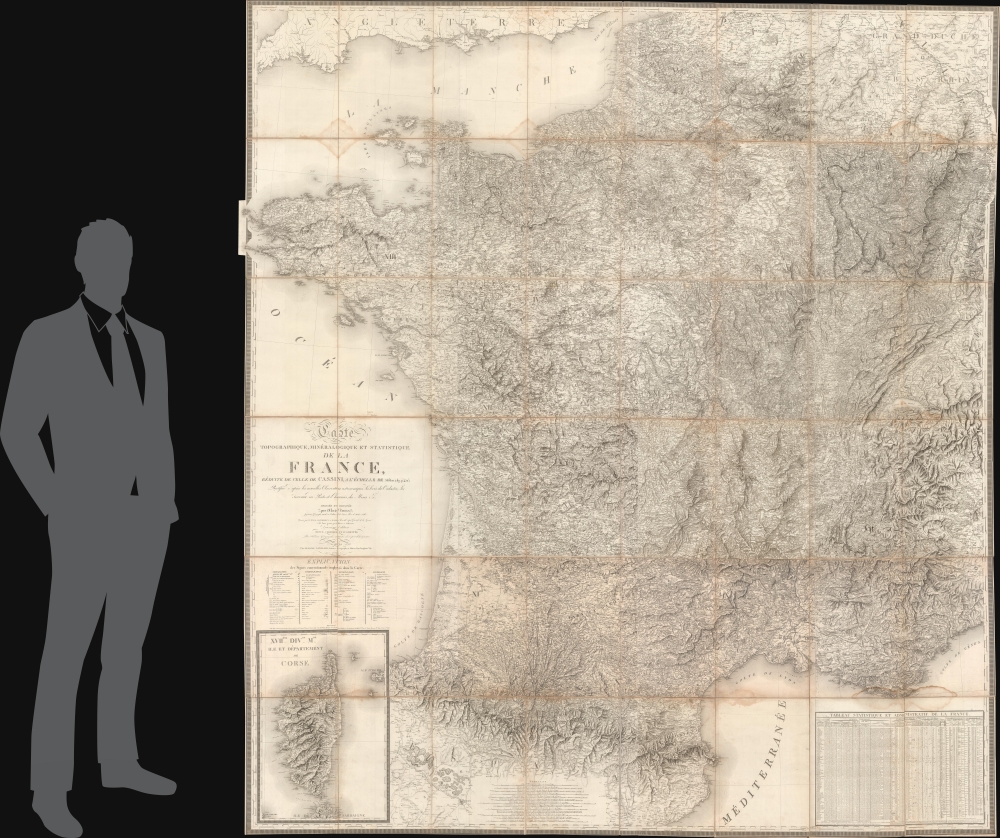1826 Donnet / Langlois Wall Map of France - Enormous!
France-donnet-1826
Title
1826 (dated) 110.5 x 100.5 in (280.67 x 255.27 cm) 1 : 388800
Description
A Closer Look
It is in essence a reduction of the great Cassini Triangulation, which produced a map of France on the staggering scale of 1:86400. While impressive and seminal, the Cassini map, being many times larger than the present map, was neither practical for looking at France as a whole nor viable for mass dissemination to government offices, schools, businesses, and other such entities. Moreover, being the finest map of France, the Cassini map was nationalized in the Dépot de la Guerre, who during the Napoleonic wars, suppressed it for military reasons. Following Napoleon's 100 Days, the Dépot de la Guerre began to loosen its hold on cartographic material, and an economically, socially, politically, and nationalistically floundering nation needed a new relatable national image. This map was thus published to make the Cassini triangulation practically disseminable and provide the French with a fresh overview of their nation.The map as a whole is exquisitely detailed, reflecting the extraordinary work of two generations of the Cassini family. Every village, road, city, battle site, chateau, and even rural churches is noted, all overlaying a detailed topographical map, indicating elevations, rivers, mountains, forests, fields, canals, swamps and mineralogical data. Milage on major routes between towns is noted. There is a map of Corsica and a key in the lower left. A statistical and administrative table appears in the lower right.
Publication History and Census
This map first appeared in 1817, just two years into the Bourbon Restoration. The current example is the 1826 second edition. It was designed by Alexis Donnet based upon the 1756 to 1815 Cassini model. It was engraved by R. Whal, Dandeleux, et Malo, with the lettering being the work of Pelicier et Lallemand. Updates over the 1815 Cassini were completed by Fremin, a geographer at the Dépot de la Guerre. It was printed by Imprimerie Malo and published in Paris by Hyacinthe Langlois. The work typically appears bound a single volume, this being the only example we have seen dissected and laid on linen as a massive folding wall map. There are several subsequent editions, each with considerable revisions, published in 1844, 1849 and 1855. We note about 6 examples of the 1826 edition in a variety of European institutions, but see no comparable examples in the United States. We note one example, 1817, sold at Sotheby's in 2022, fetching about 5000 USD, including premium.CartographerS
Alexis Donnet (1782 - 1867), aka Aleixo, was a French map geographical engineer, architect, map publisher, and cartographer active in France in the first half of the 19th century. Donnet was born in Lyon. During the First Empire he was an ingénieur-géographe attached to Cadastre de la France. His work is scarce on the market, but well represented in official collections within France, particularly the Bibliothèque Nationale de France (BnF). In addition to cartographic work, he published an architectural study of the theaters of Paris (1821). More by this mapmaker...
Hyacinthe Langlois (fl. c. 1800 - 1852) was a Parisian publishing house specializing in maps, atlases, and travel literature. They do not appear to have any relation with Eustache-Hyacinthe Langlois, a contemporary artist and engraver, who spent most of his adult life in Rouen. Learn More...
A. R. Fremin (fl. c. 1810 - c. 1860) was a French geographer active in the early to mid 19th century. He is known to have been a student of the cartographer Jean-Baptiste Poirson. Fremin drew and compiled maps for many prominent French cartographic publishers of the period including Tardieu, Logerot, Dufour, Monin, Duvotenay, Dyonnet, and Vuillemin. Little else is known of Fremin's life and work. Learn More...




